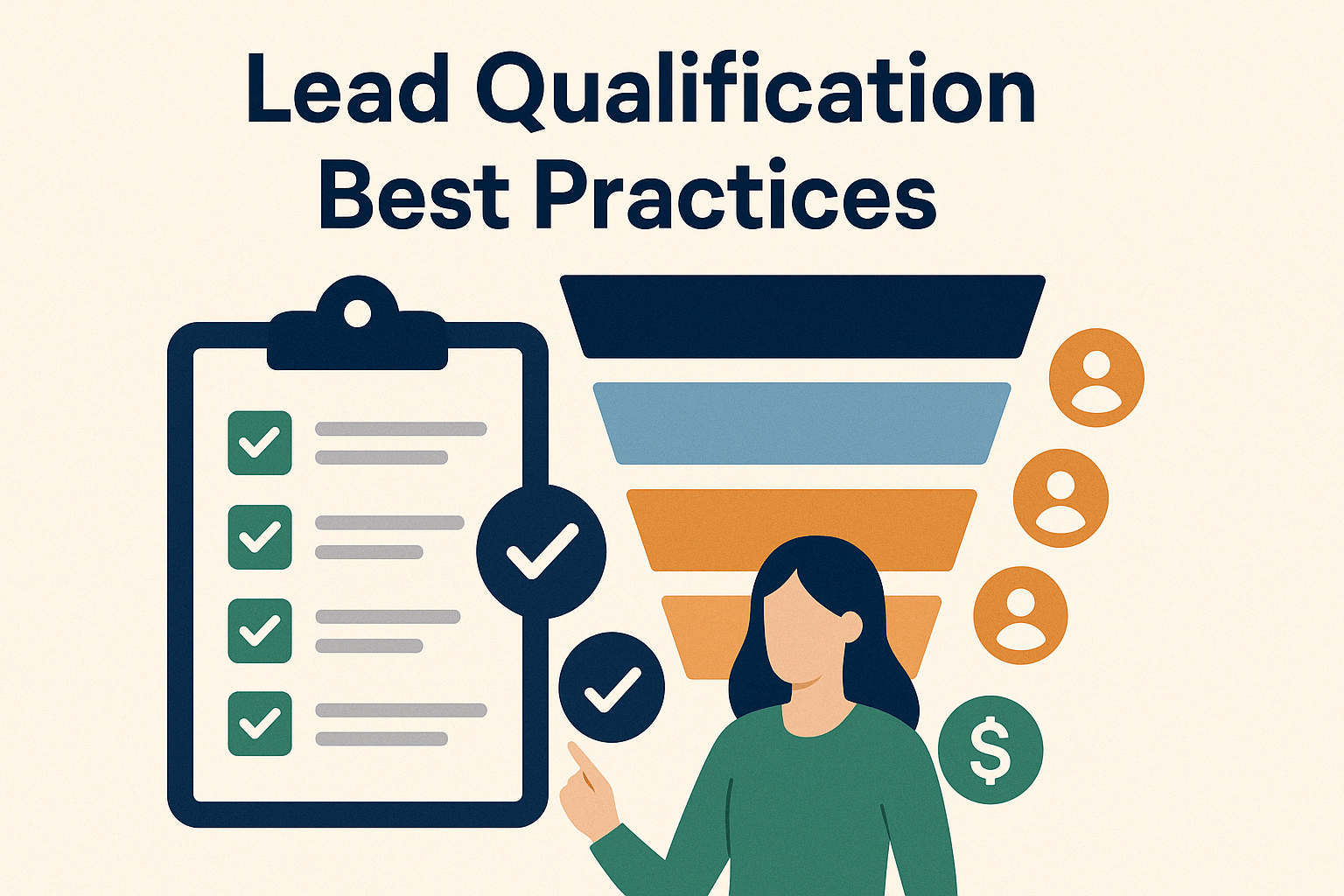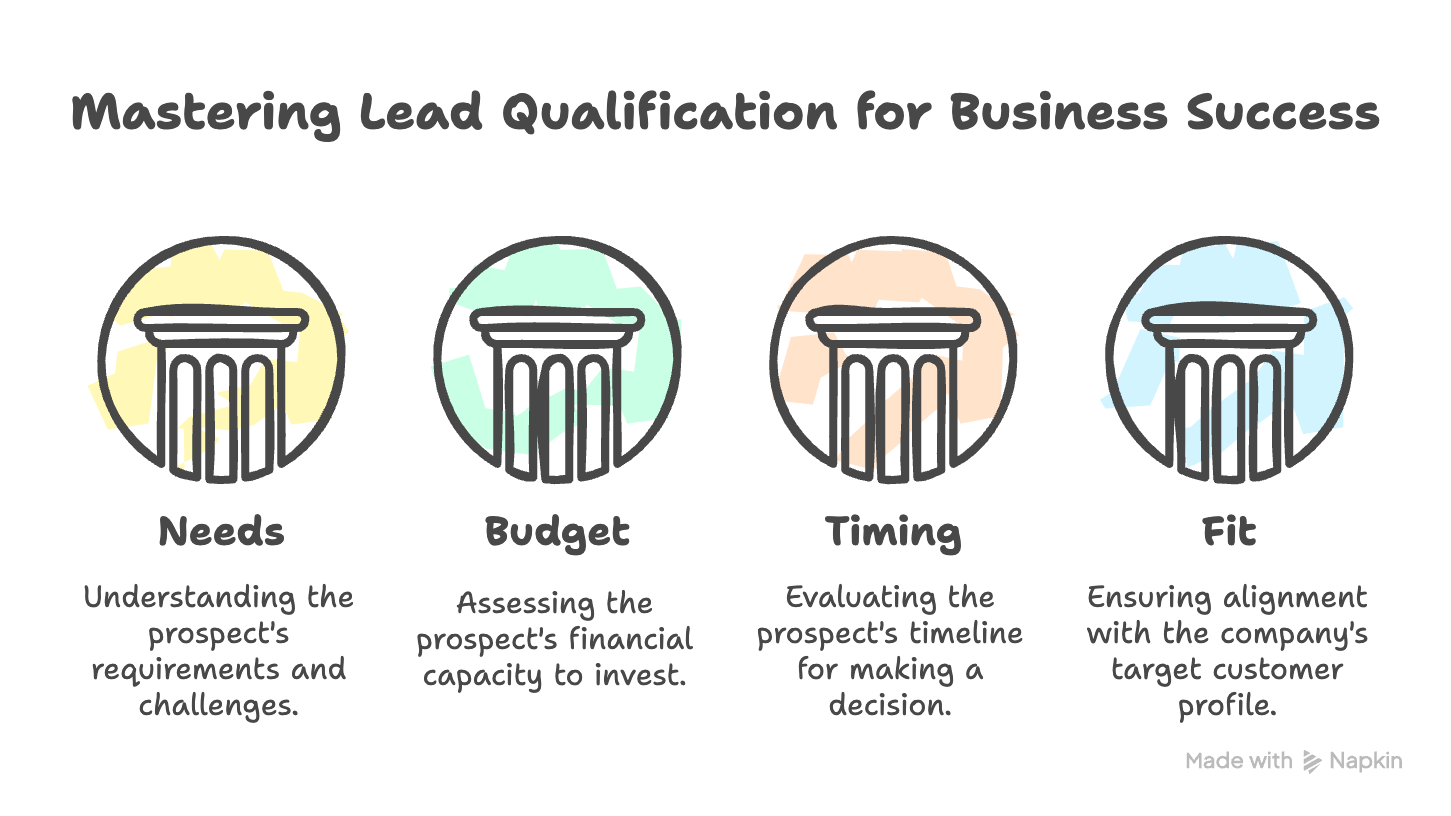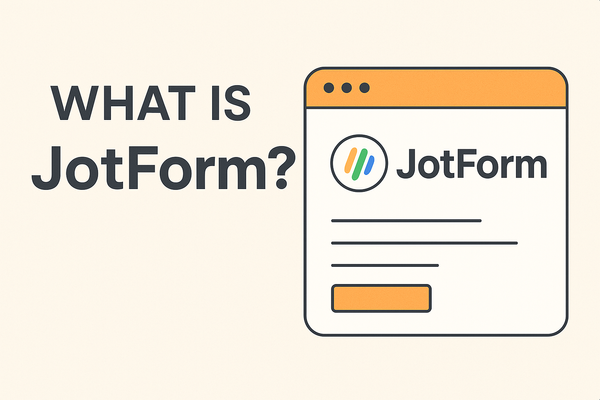Lead Qualification Best Practices

Not every lead is worth your time. You can have hundreds of leads coming in, but if they’re not qualified, they won’t convert. That’s why lead qualification is one of the most important steps in your sales process.
To succeed, you need to focus on quality over quantity. A high number of leads may look impressive, but they won’t help your business grow unless those leads are a good fit for your product or service.
So, how do you qualify leads the right way? Let’s explore the best practices for lead qualification.
What Is Lead Qualification?
Lead qualification is the process of evaluating whether a lead is worth pursuing. It’s about understanding if the person or company has the need, budget, and authority to make a purchase. This method is often referred to as BANT lead qualification, based on Budget, Authority, Need, and Timing.
You want to know if they’re likely to convert, and if now is the right time for them to buy. A qualified lead meets specific lead qualification criteria that show they’re serious about making a decision.
This process helps sales reps focus their time and efforts on the right lead, filtering out unqualified leads that are unlikely to buy. It improves lead quality, boosts conversion rates, shortens the sales funnel, and increases efficiency across both sales and marketing teams.
Why Lead Qualification Matters
If you’re spending that time chasing cold leads, you’re wasting valuable resources. That’s why qualification is a key part of the lead generation funnel.
Qualified leads are more engaged and easier to nurture. They often become loyal customers and strong brand advocates. By filtering leads based on solid data, you make better use of your time and budget.
Strong qualification ensures alignment between sales and marketing. Teams can use a shared lead scoring system and lead qualification checklist to stay on the same page. This cross-functional collaboration improves targeting and messaging.
How Do You Qualify a Lead Effectively?
A successful qualification process requires structure and strategy. Don’t guess. Don’t rely on gut feeling. Instead, build a framework based on data, customer insights, and tried-and-true sales principles.

1. Identify Their Needs
Start by asking the right questions. What problem is the lead trying to solve? What goals are they trying to achieve? If your product or service doesn’t align with their needs, they may not be the right fit.
2. Assess Their Budget
Next, determine if they have the financial means to make a purchase. Even if they love what you’re offering, a lack of budget can stall progress indefinitely.
3. Understand Their Timeline
Not all interested leads are ready to buy now. Some may be 3, 6, or even 12 months away. Understanding their timeline helps prioritize leads accordingly.
4. Confirm Their Authority
Is the lead a decision-maker or a key influencer? If not, you’ll want to know who in their organization holds that authority and how you can reach them.
5. Match Them to Your ICP
Finally, check if the lead fits your Ideal Customer Profile (ICP). Industry, company size, geography, and use case all matter. The better the fit, the better the chances of a successful sale.
What Are 5 Requirements for a Lead to Be Considered a Qualified Prospect?
Not every contact is a good opportunity. To be considered a qualified prospect, a lead should meet these five key requirements:
- Need – The lead has a clear problem or challenge that your product or service can solve.
- Budget – They have the financial resources to make a purchase.
- Authority – The person has the power to say yes, or is connected to someone who does.
- Timeline – They’re looking to take action within a reasonable timeframe, not just “someday.”
- Fit – They align with your company’s target customer profile in terms of industry, company size, or use case.
If a lead meets all five, they’re more than just a name in your funnel—they’re a potential customer worth your team’s time and effort.
Use the Right Tools
Lead qualification becomes easier with the right tools.
Platforms like Tapform can be a powerful way to improve your lead generation. Tapform lets you create custom forms that collect valuable data directly from prospects. You can use these forms to ask specific qualifying questions—like budget range, company size, or project timeline—before they even reach your sales team.
This allows you to filter leads automatically and focus only on those that match your ideal customer profile. Custom form tools like Tapform also integrate with your CRM, helping you track and follow up with the right prospects.
Improve Over Time
Your lead qualification process should improve as your business grows. Don’t keep doing the same thing if it’s not working.
Review your scoring framework often. Look at which leads are turning into customers, and which aren’t. Use that information to refine your criteria and messaging.
Run experiments. Test different strategies, email sequences, or form questions. Over time, these tweaks will help you qualify leads more efficiently.
Final Thoughts
Lead qualification isn’t just a step in the process—it’s a core part of building a predictable, scalable, and efficient sales pipeline. When you take the time to qualify leads properly, you empower your sales and marketing teams to work together with clarity and purpose. Everyone’s efforts become aligned around a shared definition of what a qualified lead looks like.
Instead of wasting time and energy chasing unqualified leads who are unlikely to convert, your reps can focus on high quality leads—those that are the best fit for your offer and are likely to convert. This focus not only shortens your sales cycle, but also increases revenue efficiency and improves team morale.
A strong lead qualification strategy ensures that you’re always working with the right leads. By building a clear lead qualification framework, you can define your lead qualification criteria, create a practical lead qualification checklist, and adopt a reliable lead scoring system that helps you prioritize leads automatically. Whether you’re using a traditional method like BANT lead qualification or your own custom process, structure and consistency are key.
This is where a tool like Tapform becomes essential. Tapform allows you to capture detailed prospect information through custom forms that integrate seamlessly into your website or landing pages. By collecting data like budget, timeline, company size, or goals right at the start, Tapform helps automate inbound lead qualification and instantly filters prospects based on predefined qualification criteria. This gives your team a serious edge—by surfacing the best opportunities and letting you nurture leads who aren’t quite ready yet.



